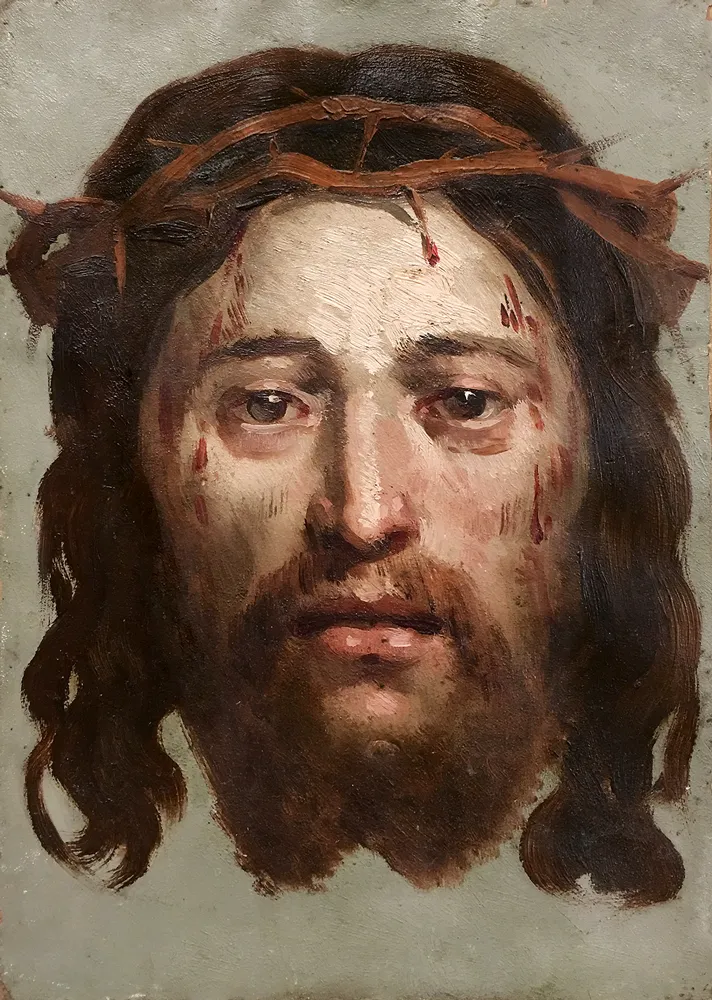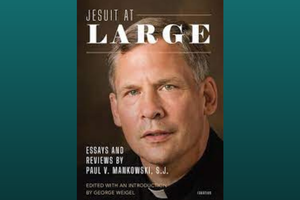Author Invites Readers to Encounter Jesus Through Great Works of Art
The meditations are juxtaposed with spiritual writing from authors including C.S. Lewis, Fyodor Dostoevsky, Blaise Pascal, G.K. Chesterton and more.

At first glance, “Jesus in Art and Literature” (Abrams, 2022) looks and feels like a conventional “coffee table book,” a bound collection of pictures, meant as much for display as for reading.
But readers who crack open this atlas-sized tome — weighing in at just shy of 4 pounds — will be rewarded with more than just beautiful images.
The author, Pierre-Marie Dumont, founder and publisher of the monthly Catholic magazine Magnificat, has put together a book about Jesus as seen through the eyes of great artists that’s a survey of the whole of salvation history as well as food for spiritual meditation.
Over the course of 80 reflections, Dumont takes us from Creation through the Resurrection by analyzing works of art depicting key moments in the life of Jesus. Each meditation delves into the cultural, artistic, literary, and theological context of masterpieces from early Christianity to the modern era, by artists including Fra Angelico, Rembrandt, Titian, and Picasso. Some of the works may be familiar to the reader, while others come from private collections.
In a reflection based on Fra Angelico’s portrayal of the Last Supper, for example, Dumont decodes the symbolism in the painting, includes a reference to Communion from the New Testament, explains first-century Jewish dining customs, and quotes from a passage from a novel by Honoré de Balzac describing a fictional character’s first Communion.
The meditations are juxtaposed with spiritual writing from authors including C.S. Lewis, Fyodor Dostoevsky, Blaise Pascal, G.K. Chesterton as well as some unexpected sources. A reflection on Jesus as a child is accompanied by a passage from a short story by Oscar Wilde who, Dumont notes, later converted to Christianity after “a very strong spiritual experience” while imprisoned for homosexual behavior.
Sacred art plays an important role in Dumont’s Magnificat magazine as well. Among the prayers and daily liturgical readings featured in each issue are photos of paintings and sculptures along with reflections connecting them to the readings. Dumont recently spoke to CNA about his new book and about the role art has played in his own life.
This book features great works of sacred art, something your magazine, Magnificat, is also known for. Did you study art? Were you an artist yourself?
I am self-taught. I started my professional life as an antiquarian bookseller, then as a publisher at 18. However, I was born into a family of artists and art lovers, I practiced painting myself; my wife’s grandfather was the famous painter George Desvallières and her father, who was my teacher, Gérard Ambroselli, was a recognized painter in France and, moreover, an expert in ancient paintings for the famous art dealer Daniel Wildenstein.
What made you want to write a book about Jesus in art and literature?
I found that many art historians and critics had lost the sense of the deep connection that most artists once had with the person of Jesus. Thus, despite their quality, many writings on art miss the transcendent dimension that these artists wanted to give to their work. Most of them were true believers!
Are there any works of art featured in this book that are particularly meaningful for you personally? When you think of Jesus, do you imagine him as portrayed by any of these paintings?
It depends on the day, my spiritual “mood,” and the events of my life. It's a bit like the words of Jesus in the Gospel, at such and such a moment, in such and such a circumstance, such and such a word will touch me more than another. However, when I examine my conscience, I always contemplate the extraordinary Holy Face [of Jesus] (that you will find in the book) and let myself be stared at by it.
How did you select the paintings included in this book?
The works in this book are a selection of the most beautiful covers of Magnificat magazine. Thus, I had the chance to contemplate each one for a month, in connection with the liturgical life of the Church, which makes us members of the Body of Christ and, as such, actors in the history of salvation.
A few of the artists and writers featured weren’t known for their religious faith. What can we learn from them? In what ways might we learn more from them than from more devout artists?
We don’t learn more from “faithless” artists than from devout artists. But we can still learn something. We can receive from each one a light that only he has been able to discern and refract to us with his own genius. From the unbelievers, we can receive a radiance of Jesus that we, devotees, can tend to put under a bushel. Don’t we see in the Gospel that, at times, “prostitutes and public sinners” let themselves be illuminated by Jesus more easily than the devout?
What are your thoughts on the movement in the U.S. to bring back sacred art of the sort that is featured in this book?
I called for this movement when I created Magnificat magazine in 1992 and when I launched it in the U.S. in 1998. I am certain that the million readers who have Magnificat as the daily companion of their spiritual life are at the forefront of this movement.
How do you look at art? Can you describe your state of mind when you go to a museum, for example?
For each of us, there is a time for everything and availability of spirit that varies every day that God makes, according to our moods. The most important thing, without which all the rest is only verbiage and sentimentalism, is to understand why such a work is objectively a great work of art, and not a very estimable decoration for a tie or a bathrobe. Having acquired this, I sometimes go to a museum to contemplate one work for a long time, as well as to pass quite quickly from one work to another to fill my eyes with beauty. Curiously, in these cases, our eyes see and retain much more than we are aware of having seen. But of course, it is never profitable to go through more than two or three rooms per visit: in art, too, gluttony is a bad habit.
- Keywords:
- catholic books



















